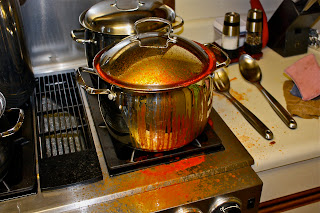2006: No photos, but Aunt Jane, Grandma Molly, Cousin BJ and I canned juice. (I'm sure by the truckload.)
2007: No group photo, but we canned 102 jars and 16.5 gallons. (Laurel wrote a post about this year here.)
2008: 139 jars and 18 gallons. (How professional do we look in our aprons?)
2012: 275 jars and 33.3 gallons
2013: I'm setting the over-under at 248.5. I'll begin taking bets next week.





















































